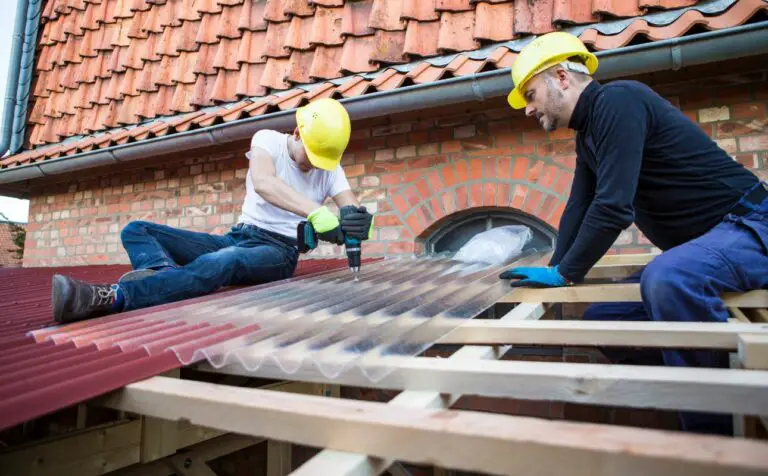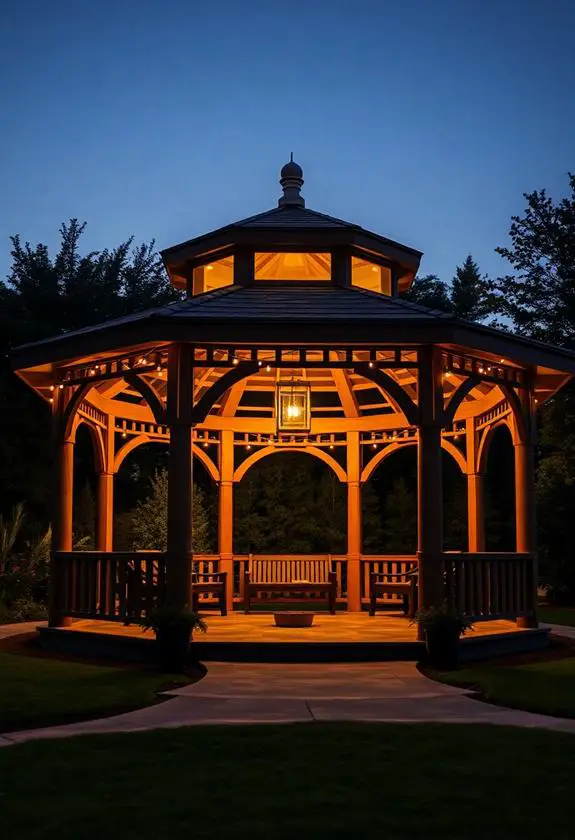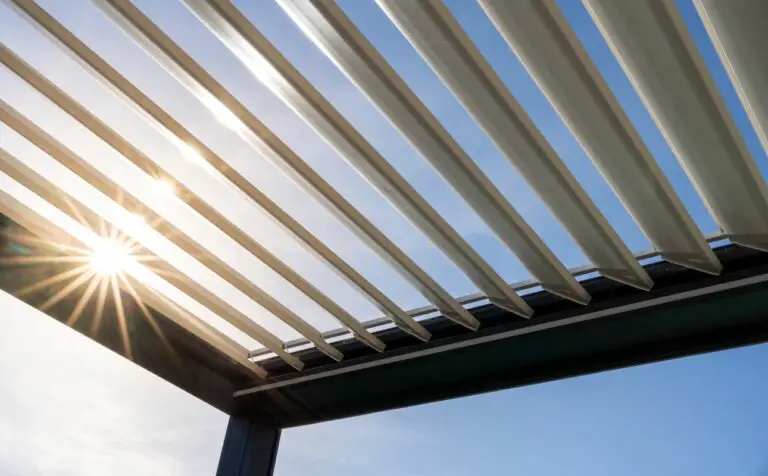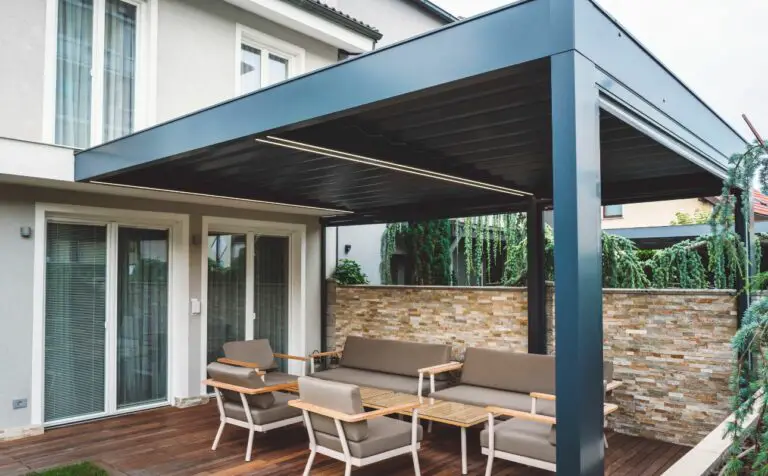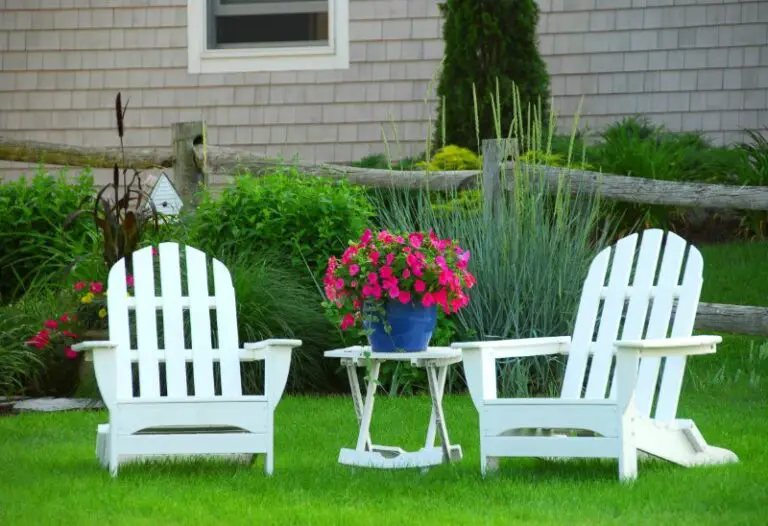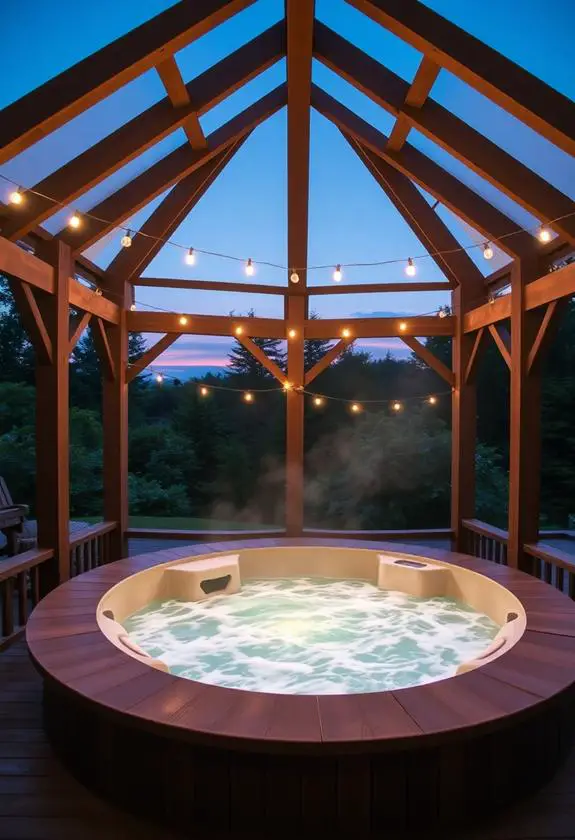Cedar pergolas are a popular addition to outdoor living spaces due to their aesthetic appeal and functional benefits. They provide shade, and privacy, and add value to the property.
Over time the natural colour of cedar can fade or gray out due to exposure to sunlight and weather elements. This raises the question: Can you paint a cedar pergola?
The answer is yes, but there are important factors that need consideration before beginning this process. Cedar has unique properties that make it resistant to rot and insects, therefore using certain types of paints may not be suitable for this type of wood.
Proper preparation such as cleaning and sanding the surface is essential for achieving optimal adhesion and durability of the paint coating. This article aims to explore in detail whether painting a cedar pergola is feasible, what materials should be used and how to properly prepare the surface before applying paint.

Benefits Of Cedar Pergolas
Cedar pergolas are a popular outdoor structure that can provide both functional and aesthetic benefits.
One of the most significant advantages of cedar pergolas is their low maintenance requirements. Cedar wood has natural oils that make it resistant to insect damage, rot, and decay, which means that your cedar pergola will last for years without requiring much upkeep.
Cedarwood has a beautiful grain pattern that makes it an attractive choice for any backyard or garden setting. There are various design ideas available when building a cedar pergola, from modern styles with clean lines to more traditional designs with intricate latticework.
With so many options available, you’re sure to find a cedar pergola design that complements your home’s architecture and landscaping seamlessly.
Factors To Consider Before Painting Cedar Pergolas
Cedar pergolas have a natural beauty that can enhance any outdoor space. Before painting a cedar pergola, it is important to consider the pros and cons and maintenance tips to ensure that the finished product meets your expectations.
Pros:
- Painting a cedar pergola can provide additional protection against weathering and UV damage.
- It allows you to customize the look and feel of your outdoor space.
- The painted surface will be easier to clean compared to bare wood.
Cons:
- Cedar is naturally resistant to rot and decay, so painting it could potentially trap moisture inside leading to rotting over time.
- Over time, paint will start peeling off which means repainting would be required every few years.
- Painting hides the natural beauty of cedar.
Suitable Paint Types For Cedar Wood
When it comes to painting a cedar pergola, choosing the right type of paint is essential in ensuring that it looks great and lasts long. There are various painting techniques that can be employed depending on one’s preferences, including brush application, spray guns or rollers.
It is important to note that not all paints will adhere well to cedar wood due to its natural oils and tannins. These types of paint typically contain acrylic resins that allow them to bond effectively with the surface of the wood while still allowing moisture vapour transmission.
In terms of colour options, there are numerous choices available as most paint manufacturers offer an extensive range of shades suitable for outdoor applications.
Proper Surface Preparation Techniques
Surface preparation is a vital step in any painting project. Cleaning and stripping the surface of any dirt, grime, or other contaminants is essential to ensure a successful paint job.
Priming the surface, sanding, and applying wood preservatives are all important steps that should not be overlooked. Finally, applying a sealer, primer-sealer, stain, paint, and clearcoat will help ensure the longevity of the job.
Cleaning
Proper surface preparation is essential when it comes to painting a cedar pergola. One of the most important steps in this process is cleaning, which involves removing any dirt, grime or previous coatings from the surface.
Pressure washing can be an effective method for cleaning a cedar pergola as it uses high-pressure water to blast away accumulated debris and stains. However, care must be taken not to damage the wood with too much pressure.
Chemical stripping may also be used to remove old paint or stain, but caution must be exercised when working with chemicals as they can pose health risks if not handled properly.
Priming
To ensure the longevity of your cedar pergola, proper surface preparation techniques are crucial. In addition to cleaning, priming is another essential step in this process that should not be overlooked.
Priming involves applying a coat of primer on the wood before painting or staining it. This creates a barrier between the wood and the paint or stain, preventing moisture from seeping into the wood and causing damage over time.
Cedar maintenance experts recommend using an oil-based primer as it provides better adhesion and durability compared to water-based options.
Step-By-Step Guide To Painting Cedar Pergolas
Painting a cedar pergola can help protect the wood from weathering and give it a fresh, new look. Here’s a step-by-step guide to painting a cedar pergola:
Materials Needed
- Paintbrushes and/or rollers
- Exterior wood primer
- Exterior wood paint
- Sandpaper
- Drop cloths or plastic sheeting
- Painter’s tape
- Cleaning solution (such as a mixture of water and bleach)
Step 1: Clean the Pergola
Before painting, it’s important to clean the pergola thoroughly to remove any dirt, debris, or mildew. Use a cleaning solution (such as a mixture of water and bleach) and a scrub brush to clean the wood. Rinse the pergola with clean water and let it dry completely.
Step 2: Sand the Pergola
Using sandpaper, sand the surface of the pergola lightly to create a smooth, even surface for the primer and paint to adhere to. Wipe away any dust with a clean, damp cloth.
Step 3: Apply Primer
Apply a coat of exterior wood primer to the pergola using a paintbrush or roller. Allow the primer to dry completely before proceeding to the next step.
Step 4: Apply Paint
Once the primer is dry, apply a coat of exterior wood paint to the pergola using a paintbrush or roller. Be sure to follow the manufacturer’s instructions regarding application and drying times. Apply a second coat if necessary.
Step 5: Let the Paint Dry
Allow the paint to dry completely before removing any painter’s tape and enjoying your newly painted cedar pergola.
The Bottom Line
Cedar pergolas are a beautiful addition to any outdoor space, but they require maintenance to maintain their appearance and longevity. It is recommended to repaint the cedar pergola every 3-5 years depending on weather conditions and exposure to sunlight.
Regular exterior paint can be used on cedar pergolas, but it’s essential to use a primer before painting. Staining is also an option if you prefer not to paint your cedar pergola. Stains penetrate into the wood fibres, enhancing their natural beauty while offering protection against UV rays and water damage. However, staining requires more frequent reapplication than painting.
Whether you choose to paint or stain your cedar pergola ultimately depends on personal preference. Both options provide protection against environmental elements that could potentially damage the wood structure.
